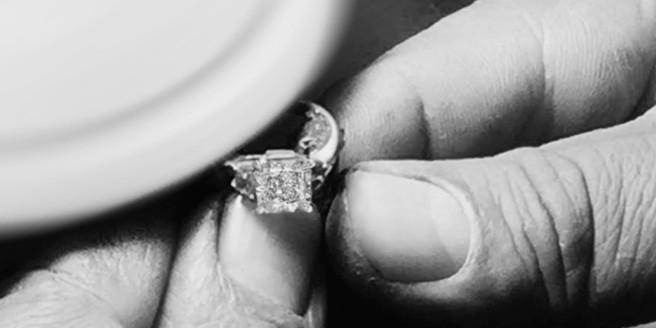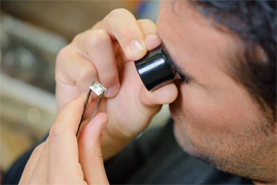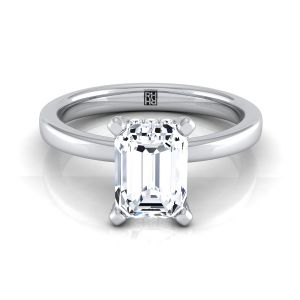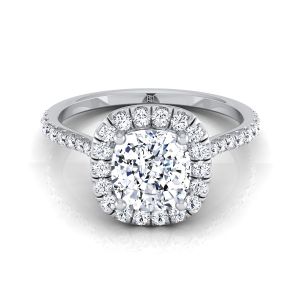Diamonds have been a precious commodity for most of recorded human history. In fact, the earliest descriptions of diamonds date back to the 4th century BC in northern India, where diamonds were already held in high esteem. That history makes the diamond industry one of mankind's oldest and most valuable luxury markets of all time, but it is one that went almost unchanged throughout most of its long history. Today, however, technology is starting to change all of that.
Today, a whole raft of technological innovations are working their way into the global diamond industry, changing the face of the market for industry insiders and consumers alike. You'll find new ideas and approaches permeating every level of the diamond value chain, from mining operations all the way to retail sales channels. Here at Rockher.com, we're helping to lead the charge into the new era of diamond technology, and see it as a necessary evolution of the market toward a more customer-centric focus. Here's a look at some of the ways technology is driving change in the diamond industry throughout all phases of the business.
Mining Exploration
The first, and most challenging part of the diamond industry to feel the effects of advancing technology is the mining process that allows diamonds to be located in the first place. For years, diamond mining operations have been the most costly and difficult part of the value chain, because even the most skilled geologists have difficulty locating the kimberlite pipes that yield the majority of gem-quality diamonds.
In general, most diamond exploration has relied on magnetic surveys (due to kimberlite's unique magnetic properties) since the end of World War II. The problem is that the process, while useful, yields a high volume of false-positives and tends to miss deeper kimberlite deposits completely.
Lately, however, there's been quite a bit of progress toward locating kimberlite deposits using a newer process known as seismic reflection. Initially developed as a tool for geologists studying earthquake activity, seismic reflection allows for detailed analysis of underground formations through the measurement of high-frequency sound waves passing through them.
The technology is still being refined, but it's reaching a maturity level that could prove to be a total game-changer in the diamond industry. Once in widespread use, the technology should reduce the time and effort it takes mining companies to locate diamond-rich kimberlite deposits, lowering costs industry-wide.
Tracking Diamonds

One of the greatest challenges faced by the diamond industry in the modern era is the need to eliminate some of the abusive practices that exist within it. Unfortunately, the diamond industry has been associated in the past with things like illicit sales being used to fund civil wars and a wide variety of black-market trading in stolen or otherwise compromised gems. The biggest reason that such unsavory activities have flourished for so long is that it is extraordinarily difficult for the sprawling diamond industry to maintain transparency and traceability at every level of the trade.
Recently, though, a technology has appeared that seems to be well suited to ending some of the diamond industry's biggest problems once and for all: the blockchain. It's the same technology that powers the cryptocurrencies that have taken the world by storm over the last few years but is at its heart a decentralized, encrypted digital ledger capable of storing unalterable copies of almost any type of data. In short, it is perfect for cataloging diamonds.
Tech giant IBM is already providing the blockchain tools needed to create a diamond registry that will allow market participants to track individual diamonds from mine to market, eliminating fraud and abuse up and down the chain. Eventually, the system will allow individual customers to trace the history of any diamonds they purchase, helping to increase transparency and trust in the consumer side of the market.
Enhancing the Customer Experience
The diamond market, like any other specialty luxury market, has long been dominated by large dealers who built reputations based on insider knowledge. That makes sense, given the fact that it can take a gemologist years to perfect the skills needed to identify and grade gem-quality diamonds for recommendation to consumers.
That specialized knowledge has always allowed diamond dealers to keep consumers at arms-length, and utterly reliant on their expertise. It has also fostered an environment where consumers weren't empowered to make real, data-driven purchase decisions for themselves, and where unscrupulous dealers could take advantage of inexperienced customers.
We here at Rockher.com are turning that customer knowledge deficit on its head by leveraging the latest in artificial intelligence (AI) technology to put the power back into the hands of consumers, where it belongs. To do it, we've used IBM's best-in-class Watson AI to create Rosi, the world's first digital diamond expert. Rosi's AI learned its craft alongside the world's foremost gemologists, making recommendation after recommendation until it consistently delivered results that outshined its human counterparts.
The system draws from a catalog of more than 100,000 GIA-certified diamonds and evaluates them based on over 30 different qualities to provide customers with a selection of diamonds that meets their specific needs. ROSI can even compare a diamond that a customer already owns to our inventory so they'll know how well they fared on a previous purchase. The bottom line is ROSI gives customers everything they need to make the perfect diamond purchase – no pushy sales, no insider dealing, and nothing to hide.
An Industry Reborn
From these examples alone, it is clear that technology is reinvigorating and revolutionizing one of the oldest luxury markets going. Judging by the developments so far, it looks as though the diamond industry may soon be reborn into the kind of efficient, transparent, and customer-focused market that will be necessary to carry it through the 21st century and beyond. As it's been said – a diamond is forever – and these innovative technologies are set to make sure that the same can be said for the global diamond trade, and we can't wait to see what's next.



























